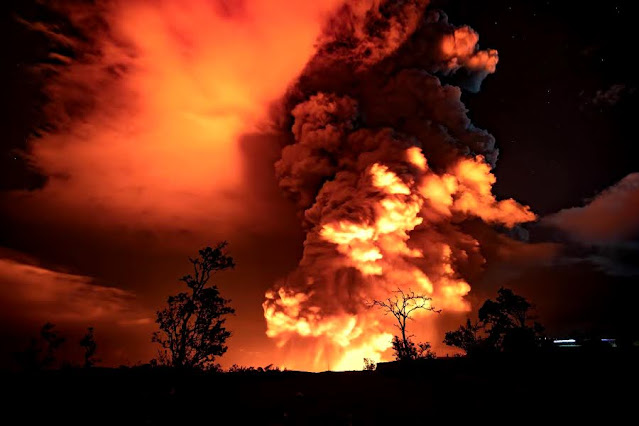As I start typing, I always, in the back of my mind, wonder where weʻll end up. Mayhaps Iʻd be more productive outlining and planning, but whereʻs the fun in that??? These posts start with very brief pencilled notes in the black and white composition book (I favor those with unlined pages) I keep. Many notes are checked off, while others await further inspiration or clarification.
Itʻs again a nearly still and now sunny morning here in the ma uka-most reaches of Keaʻau. ʻApapane trill as they often do, and though the sun shines, the air is shadowchill. The amaryllis gifted a few years ago by eb bloom near the front steps. They, and a red aliʻipoe, are in a particular spot, where conveniently, during these shortest days, barring clouds, sun shines most of the day.
Purple anthers, breezebounced on slender filaments, are especially striking when the lily first opens.
These are old-fashioned flowers, and along with daylilies, dahlias, snapdragons, and zinnias, and bleeding hearts and honeysuckle, remind me of growing up in Honokaʻa, and gardens at our home and those of grandparents. They make me smile.
As does the voice of Mrs Kanahele, chanting "E komo maloko o Halemaʻumaʻu" to introduce the video produced by HVO staff commemorating the summit eruption in Halemaʻumaʻu (2008-2018).
Folks often ask: Halemaʻumaʻu or Halemaumau? Those two ʻokina (glottal stops) matter, because their presence (or absence) change meanings of words. Aside from being the "legal" name of the primary home of Pelehonuamea as listed in databases, "Halemaʻumaʻu" is the way it is traditionally pronounced by Native Hawaiian cultural practitioners such as Mrs Kanahele, and others.
The video is timeless, timely and informative. Enjoy and learn...
When the current luaʻi pele (volcanic eruption) began just before 930p, Sunday, December 20, as noted previously, Pele appeared at the shore of a water lake at the bottom of Halemaʻumaʻu. Her interaction with water produced violent steam explosions that continued till the water boiled off.
The following two photos by JaniceWei give an idea, however insufficient that idea may be, of the power and drama of Pelehonuamea. Wow.
Carried aloft in the column are bits of tephra (volcanic ejecta) including Peleʻs hair and tears, and Iʻm guessing small pieces of limu o Pele, the photo below by Ken Hon of UH Hilo. Limu o Pele forms, as we witnessed many many times as pele flowed into the sea, when water (salt or fresh) is trapped under flowing lava. The water flashes to steam, blowing big bubbles in still-molten pele. The bubble skin stretches, freezes and bursts, and shards are carried upward.
The USGS HVO photo below, on October 5, 1988, at the coast. The bigger parts of bursting skin are limu, while we also see spatter or various forms.












No comments:
Post a Comment